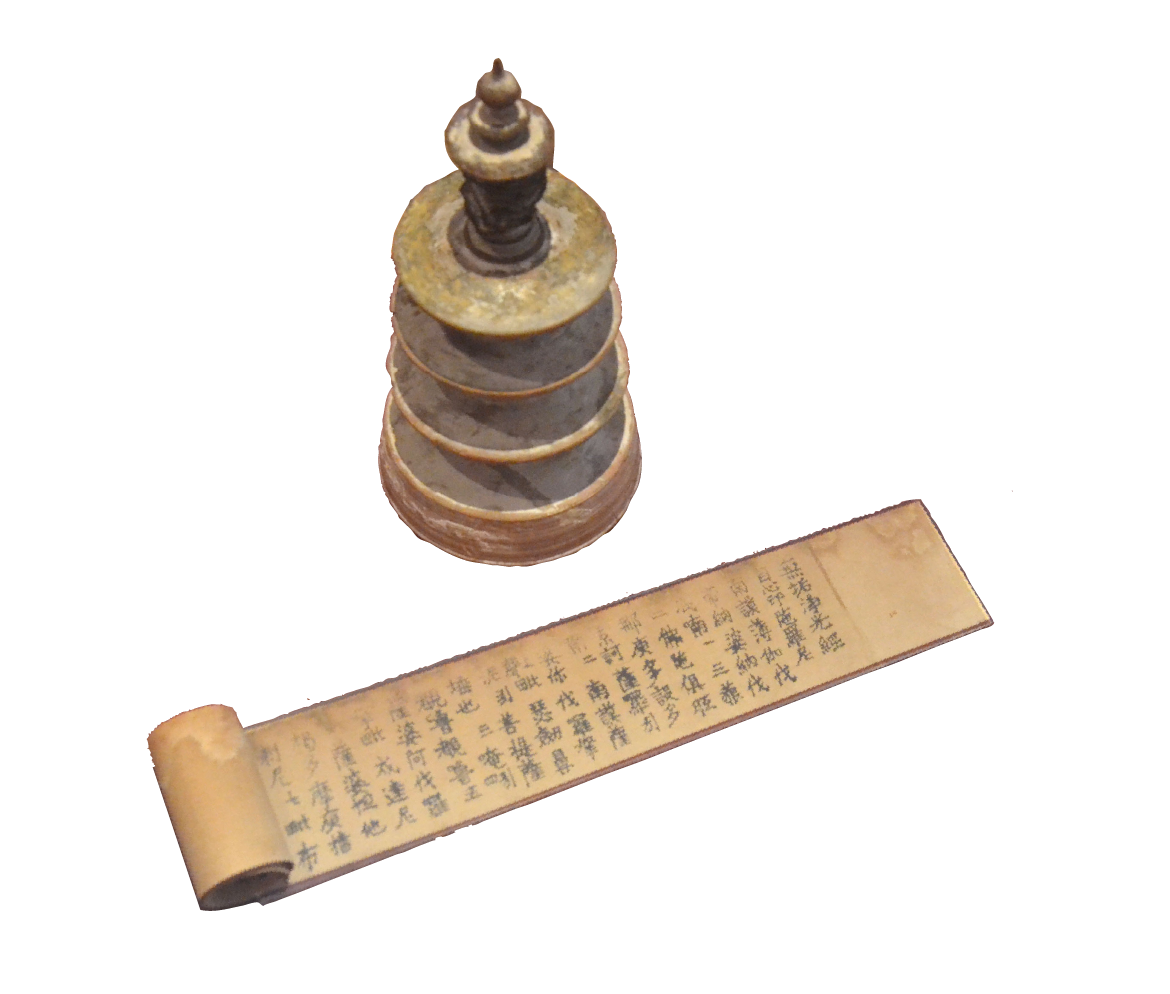

Discover the History and
Development of Washi
In Gallery 1, trace the history and development of washi (Japanese traditional paper) and Tosa washi (the variety of washi produced in Kochi), while examining our various collections to discover how washi was used and what roles it performed throughout history.

Learn《Collection Highlights》
[Gallery 1]The history of washi
In Gallery 1, trace the history and development of washi (Japanese traditional paper) and Tosa washi (the variety of washi produced in Kochi), while examining our various collections to discover how washi was used and what roles it performed throughout history.
-

Kai awase
This is a picture-matching game. The matching pictures are painted on washi that were pasted to the inside of a pair of clam shells. -

Product stamps
Wooden stamps used to put maker’s marks on the outside of packaged reams of paper. -

Paper garment
An actual article of clothing worn by a lower-ranked samurai of Tosa Province. -

Paper-mache doll
Made in the style of Kyoto Gosho ningyo, using plaster made from paper mulberry bark fiber and other substances. -

Provincial money of the Edo Period
This paper money began to be produced by the provincial government in 1704. -

Obi made from paper cloth
This obi sash was woven from thread made of spun washi. -

Stationery box
This container for storing letters was made by pasting several layers of washi together and then applying a coat of lacquer. -

One million pagodas and dharani
This miniature pagoda contains the oldest known printed item in the world, a woodblock copy of the Darani Sutra dated to AD 770. -

Japanese-style calendar
A calendar scroll bearing the traditional Japanese calendar information up to Meiji 3 (1870). -

Ikkanbari (Japanese traditional paper-mache)
In this traditional Japanese craft, washi is pasted in layers upon a frame of bamboo or wood, and the finished object is colored with Japanese lacquer or persimmon juice. -

Hair tie string
In the mid-1700s, these cords made of spun paper began to be used for tying back long hair, in place of rope made out of hemp. -

“Nihon Seishiron”(Treatise on Japanese Papermaking )
Edited by Harumi Hirayama from the words of Genta Yoshii and published in 1898.Designated as an Important Cultural Property by Ino Town.
[Gallery 2]About the washi process
In Gallery 2, explore the process of manufacturing washi. You will see detailed depictions of the paper mulberry and oriental paperbush harvest and of each step of the manufacturing process, and you will learn about papermaking tools and how they are made.
-

Packaged washi
After the final product has been cut down to the required dimensions and packaged, the wrappings are stamped with the maker’s mark and the washi is ready to be shipped. -

Process of kōzo pulpinng Left: Sticks from a kōzo (paper
mulberry plant)
Middle: After the sticks are steamed, the bark is peeled off, and the surfaces are scrubbed to remove impurities. At this stage, the material is called rokubu-sarashi.
Right: The rokubu-sarashi is soaked in a warm alkali bath for 2 hours, and then rinsed off. -

Process of screen making
Left: Thinly sliced bamboo strips are split thinner at the ends.
Middle: The split strip pieces are pulled apart to make flat slivers.
Right: The flat slivers are inserted into a device to shave them into rounded slivers. -

Sukiketa frame for making tengujo-shi
This tool is used to mold the raw material into a very delicate kind of washi called tengujo-shi. It was made by the late Mr. Noboru Inoue. -

Sukiketa frame for making Jingu-shi
This sukiketa was made in 1924 for the purpose of molding mural paper for the anniversary of the Meiji Shrine. At 3×2.5 meters, it is an unusually large sukiketa. -

Silk gauze loom
When making delicate tengujo-shi, a layer of silk gauze is laid on top of the pulp in order to protect the paper from being imprinted with the pattern of the bamboo sukisu screen. The gauze is made using a loom like this. -

Compressor
After the raw materials have settled into shape, the damp paper is weighed down and gradually compressed to squeeze out the remaining moisture. -

Cutting-tools
After the paper has dried out, this special knife is used to cut it to size.



















